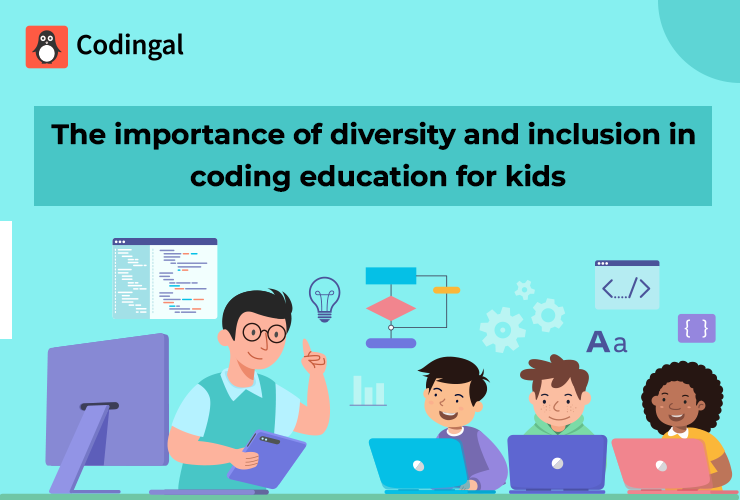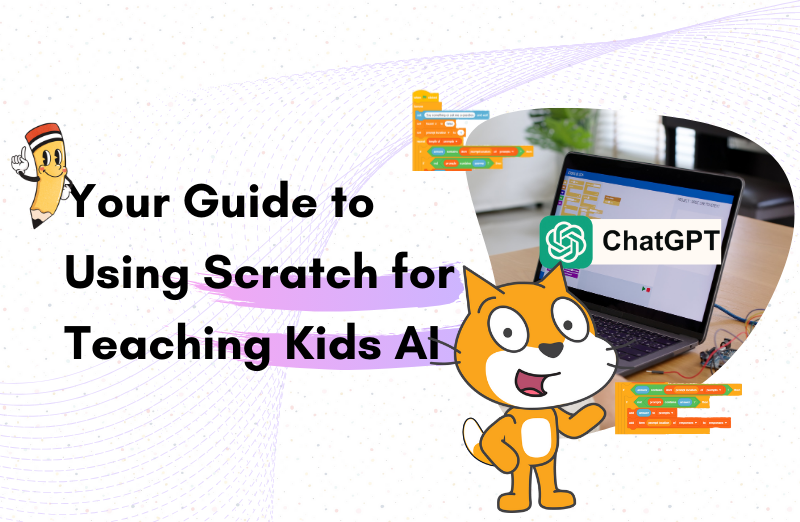Table of Contents
Importance of Diversity and Inclusion in Coding Education for Kids
Understanding Diversity and Inclusion in Coding Education for Kids
Benefits of Diversity and Inclusion in Coding Education for Kids
Strategies for Promoting Diversity and Inclusion in Coding Education for Kids
Wrapping Up
In today’s rapidly evolving digital world, coding education for kids has become increasingly vital. With technology permeating every aspect of our lives, it is crucial to equip the younger generation with the necessary skills to navigate and shape the future. However, beyond the technical skills and knowledge imparted through coding education in computer programming courses, it is equally important to recognize the significance of diversity and inclusion in this realm.
The importance of coding education for kids cannot be overstated. It fosters critical thinking, problem-solving abilities, creativity, and a solid foundation in computational thinking. By learning to code at an early age, children gain a competitive advantage in a tech-driven job market, opening doors to many career opportunities. Furthermore, coding education cultivates resilience, persistence, and collaboration, building essential skills for success in any field.
However, while the benefits of coding for kids are significant, we must also acknowledge the importance of diversity and inclusion within this domain. The future of technology relies on the contributions of individuals from diverse backgrounds, experiences, and perspectives. Encouraging diversity in coding education helps create a prosperous and inclusive learning environment that fosters innovation and unlocks untapped potential.
In this blog, we will delve into the crucial aspects of diversity and inclusion in coding education for kids. We will explore why promoting equal access and opportunities for children is vital.
Understanding Diversity and Inclusion in Coding for Kids
Diversity: Diversity refers to the variety of backgrounds, experiences, and perspectives individuals bring to a learning community. It encompasses differences in race, ethnicity, gender, socioeconomic status, abilities, and more.
Inclusion: Inclusion involves creating an environment where everyone feels welcomed, respected, and valued. It ensures that diverse perspectives are actively sought, heard, and incorporated into decision-making processes.
Impact of Diversity and Inclusion in Coding for Kids
- Enhanced Learning Environment
A diverse and inclusive coding education environment promotes collaboration and encourages students to share their unique perspectives, resulting in a richer learning experience for all participants.
- Equal Opportunities
By embracing diversity and inclusion, coding education aims to provide equal opportunities for all children, regardless of their background or identity. This helps bridge the gap in access to education and technology, ensuring that everyone has the chance to participate and excel in the field.
- Increased Representation
Diversity and inclusion efforts in coding education contribute to breaking down stereotypes and increasing the representation of underrepresented groups in the tech industry. This creates a more inclusive workforce and fosters a culture of equity and fairness.
Benefits of Diversity and Inclusion in Coding for Kids
Diversity and inclusion in coding education for kids offer a myriad of benefits that go beyond technical skills. By fostering an inclusive environment, children can reap the following advantages:
- Improved Problem-Solving Abilities
When children from different backgrounds collaborate, they bring unique perspectives and experiences. This diversity of thought enables them to approach challenges from various angles, leading to more comprehensive problem-solving skills.
- Increased Creativity and Innovation
When children are exposed to different cultures, beliefs, and ways of thinking, they are inspired to think outside the box and develop novel ideas. This encourages a more innovative mindset, vital in the ever-evolving coding field.
- Expanded Perspectives and Global Understanding
Children develop empathy and gain a broader worldview by engaging with peers from diverse backgrounds. They learn to appreciate and respect different cultures, fostering a sense of global citizenship.
- Increased Collaboration and Teamwork
When children work in diverse groups, they learn to value and leverage the strengths of their team members. This cooperative environment nurtures essential teamwork and communication skills, crucial for success in coding and beyond.
- Enhanced Learning Outcomes
Research has shown that diverse classrooms stimulate intellectual growth, critical thinking, and problem-solving abilities. The exposure to diverse perspectives and ideas enriches the learning experience, resulting in better educational outcomes for all children involved.
Strategies for Promoting Diversity and Inclusion in Coding Education for Kids
- Encouraging Girls and Underrepresented Groups to Pursue Coding
To promote diversity in coding education, it is crucial to encourage girls and underrepresented groups to pursue computer programming courses from an early age. This can be achieved by organizing coding workshops and camps targeting girls and minority communities. Additionally, showcasing successful role models in these groups can inspire and motivate young learners. Encouraging coding clubs and mentorship programs that cater to girls and underrepresented groups can also create a supportive environment.
- Promoting Coding Education in Low-Income Areas
Access to coding education should be available in low-income areas to bridge the digital divide. This can be achieved by partnering with local schools, community centers, and non-profit organizations to provide coding classes and workshops. Offering scholarships, subsidized programs, or free coding resources can make coding education more accessible and affordable for students in low-income areas.
- Creating a Culture of Inclusion in Coding Classrooms
Creating a culture of inclusion is essential for fostering diversity in coding classrooms. Educators should emphasize the importance of respect, empathy, and collaboration. Implementing inclusive teaching practices such as group work, diverse learning materials, and diverse coding projects can encourage students from different backgrounds to participate and feel valued actively.
- Providing Access to Technology
To promote diversity and inclusion in coding education, all students must be provided access to technology and computer programming courses. This can be achieved by ensuring that schools and community centers have well-equipped computer labs and by offering loaner laptops or tablets to students needing personal devices. Collaborating with technology companies and non-profit organizations can help secure funding and resources to support these initiatives.
Wrapping Up
In conclusion, diversity and inclusion in coding education for kids cannot be overstated. By promoting diversity, we create a more equitable society and foster innovation in the technology field. We must provide equal opportunities for children to engage in coding, ensuring no one is left behind. Codingal calls upon educators and parents to actively promote and support initiatives that bridge the gap and empower children from underrepresented communities.
Let us work together to build a future where every child can thrive in the coding world, regardless of race, gender, or socioeconomic background. Join us in championing diversity and inclusion in coding education for kids today.














